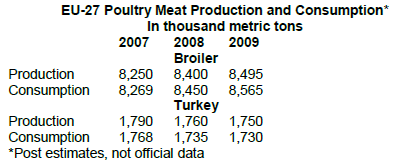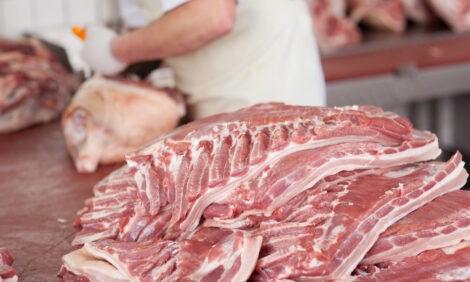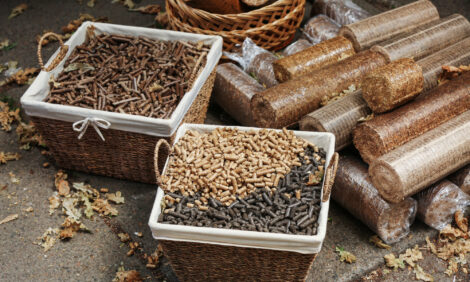



International Egg and Poultry Review
US - By the USDA's Agricultural Marketing Service. This is a weekly report looking at international developments concerning the poultry industry. This week's report covers the poultry situation and outlook in the European Union (EU) and trade with Thailand and China.The European Union
Broiler production in the EU is expected to increase in 2008 while turkey production continues to slow. The EU-27 will be a net importer of broiler meat in 2008 and 2009 due to rising imports from Brazil and Thailand coupled with fewer exports to the Middle East. Broiler meat consumption is expected to grow 2% in 2008 and 1% in 2009; turkey meat consumption is expected to fall 2% in 2008 and continue its downward trend in 2009.
Broiler production is expected to increase in most Member States. In 2009, broiler production expected to grow only 1-2%, in line with consumption. The German broiler industry successfully promoted D/D/D origin labeling (born/raised/slaughtered in Germany) to the extent that slaughter companies in Germany are looking for new contract producers. Production in Benelux and France is buoyant driven by higher domestic demand and higher intra-EU exports, especially to Romania and Bulgaria where EU broiler meat is replacing banned U.S. imports. The U.S. lost a 100,000 MT market in Romania and Bulgaria after they joined the EU.
The poultry industry has been more successful at passing on higher feed and energy costs to retailers and consumers as broiler meat remains competitively priced compared to beef, lamb and pork. An abundant EU grain crop should result in lower feed prices in 2009. As meat prices stabilize, consumers may increase beef consumption at the expense of poultry.

Brazil and Thailand won a WTO case against an EU reclassification of “salted” chicken cuts, which had significantly raised the import duty. In July 2007, the EU created a new regime for imports of salted poultry meat, preparations of turkey meat and cooked chicken meat into the EU, primarily from Brazil and Thailand.
The new annual tariff rate quota (TRQ) for salted poultry meat (HS code 0210 99 39) at a bound rate of 15.4% was allocated as follows: 170,807 tons from Brazil; 92,610 tons from Thailand; and 828 tons from third countries. In addition, a TRQ for preparations of chicken meat (HS 1602 32 19) at a customs duty of 8% was created representing 79,447 tons annually from Brazil; 160,033 tons from Thailand and 11,433 tons from other countries.
The TRQs for salted poultry and preparations of chicken meat both filled in 2007 and are expected to fill again in 2008, with the exception of salted broiler meat from Thailand, which remains limited due to AI- related import restrictions. Some experts expect EU broiler imports to stabilize following the implementation of the tariff rate quotas; others believe that over-quota imports could increase if EU domestic prices remain high, despite an additional tariff rate of one Euro per kilogram.
Source: USDA FAS/Department of Commerce
Thailand and the EU
Thai poultry exporters are concerned that the EU import quota may limit export growth in the near further and have urged their government to negotiate with the EU to raise import quotas for cooked chicken. However, there is no current plan for quota negotiations between the Thai Government and the EU. Thailand has quota for 92,610 tons of salted poultry, but Thailand has only been able export cooked products to the EU since 2004 due to detections of high path avian influenza.
The World Animal Health Organization (OIE) initiated the concept of compartmentalization to facilitate international trade. Thailand continues to pressure major importing countries, such as the EU and Japan, to accept the compartmentalization practice to allow Thailand to export raw/uncooked chicken meat, regardless of the Avian Influenza country status.
Trade sources in the Thai Broiler Processing Exporters Association reported that Department of Livestock Development (DLD) approved two Thai integrating companies to be qualified for a compartmentalization audit. OIE representatives reportedly verified the Thai system in mid 2008 and representatives from the DLD and the association have discussed compartmentalization initiatives as a pilot project with both Japan and the EU.
Cooked chicken exports to the EU have grown steadily over the past few years, since the EU banned frozen chicken in 2004 due to outbreaks of highly pathogenic avian influenza in Thailand.
Source: USDA FAS/Department of Commerce, news wires
China and the EU
The European Commission adopted the decision to allow poultry treated to a minimum temperature of 70 degrees Celsius (158 degrees Fahrenheit) to be imported from the Chinese Province of Shandong. This followed several inspection missions carried out by the Commission’s services in China that showed the competent authorities in China, in particular in the Province of Shandong, are sufficiently well structured to deal with the animal health status of poultry.
Local media reported nine companies in Shandong had permission to sell heat-treated poultry to the EU. An official with the Shandong provincial department of trade estimated China’s annual export of the heat-treated products would total 100,000 tons worth US$1 billion. Shandong exported US$ 430 worth of poultry meat last year, half of the national total. Its heat-treated poultry meat exports accounted for 60% of the country’s exports.
The EU banned Chinese poultry in August 1996 due to sanitary and phytosanitary (SPS) concerns. Prior to the ban China’s average annual poultry meat exports to the EU amounted to 50 thousand metric tons, according for about one-sixth of China’s total poultry exports. The ban continued due to a series of problems related to drug residues and other health concerns. In 2004 the EU agreed to ease imports after China put in place a range of corrective measures, but the EU maintained a ban due to outbreaks of highly pathogenic avian influenza in China.
Source: Official Journal of the European Union; USDA Foreign Agricultural Service; news wires
Further Reading
| - | You can view the full report by clicking here. |









